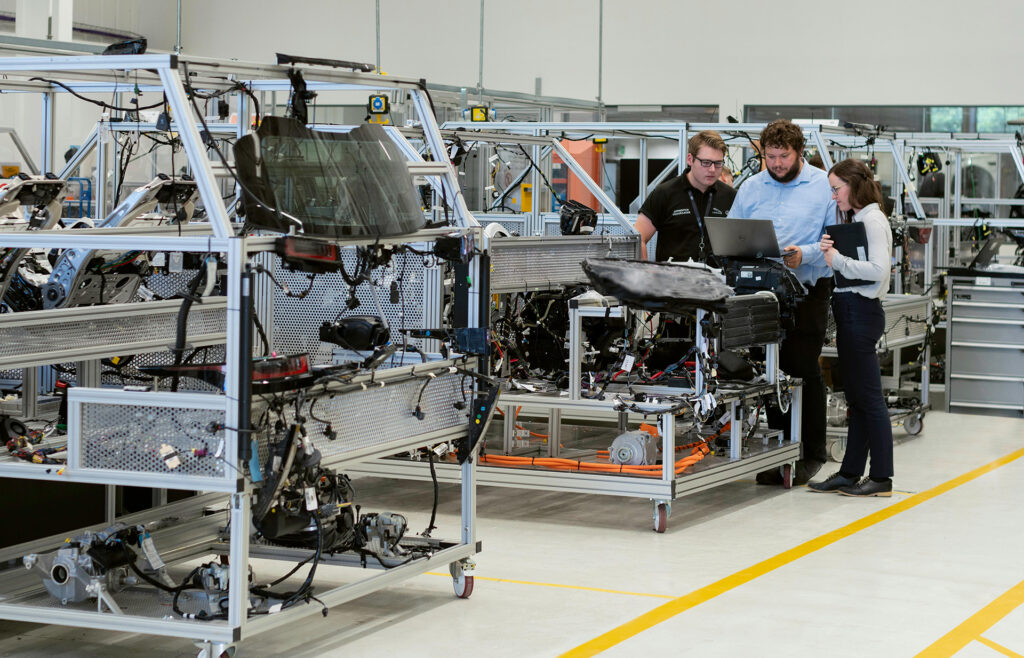As technological advancements and artificial intelligence continue transforming how people work, the automotive industry is quickly picking up the pace. However, new tech is not the sole factor shaping automotive manufacturing trends. Policy shifts are rapidly changing the costs associated with assembling and importing cars, which opens the doors to new challenges.
Introduction: A Pivotal Moment for U.S. Auto Manufacturing
The U.S. automotive industry enjoys a commendable 10.5% compound annual growth rate, a trend that will continue until 2032. Such progress spells unexplored opportunities ready to propel car companies to new heights.
Remarkably, executives who will stand out from the crowd must find the delicate balance between pursuing growth and adapting to a changing market. As policies, innovation, and competition shape the automotive space, success will belong to companies that swiftly cope with change.
Workforce Dynamics: Employment Trends and Labor Shortages
The U.S. Auto Industry 2025 labor statistics show how new policies are metastasizing. Over 20,000 jobs have been lostsince April 2024, with nearly 5,000 of them recorded in March 2025. Most of the losses are in the parts manufacturing sector.
However, other automotive industry sectors are reacting differently to importation laws. Nearly no job losses occurred in the vehicle assembly sector. Surprisingly, the trailer manufacturing and body works sector created roughly 1000 new jobs over the last year.
Amid job losses, wages recorded an 8.3% YoY increase, indicating a growing demand for skilled labor and wins for the unions. Conspicuously, the average work week reduced by 0.8 hours. Such a decrease shows that auto parts manufacturers are adopting leaner operations as necessitated by slowing production cycles.
Technological Advancements: Automation and Electrification
The shrinking labor market is affecting different parts of the continental United States in unequal measures. Northern states like Michigan, traditionally home to automotive powerhouses, are recording job losses. On the other hand, Southern states like Alabama are experiencing a surge in new jobs as they embrace electric vehicle production.
Several players are keen on capitalizing on the rising popularity of EVs. Mercedes-Benz announced that a new Alabama-based plant will open in 2027. Similarly, Hyundai has plans to expand the production capacity of its Georgia EV factory to 500,000 cars per year. In North Carolina, Toyota’s battery manufacturing plant, which aims to make 800,000 battery packs annually, will employ nearly 2,000 people.
While pivoting to EVs may secure growth opportunities, there will be a manufacturing workforce shortage in the coming months. The new demand for labor will pave the way for robotics and automation to fill the gaps created by the changing dynamics. Currently, half of robots’ sales go to car manufacturers in the U.S., a trend that may continue until 2033.
Policy Impacts: Tariffs and Trade Dynamics
While the future is bright, tariffs implemented in April 2025 had profound adverse impacts on the automotive industry. Aiming to increase manufacturing in the U.S., auto imports will feature a 25% tax. The policy will affect over 17 million vehicles, and, as a result, car makers will incur an estimated $108 billion.
The impact of automotive tariffs especially affects the three biggest manufacturers—Ford, GM, and Stellantis—who will bear a $41.7 billion burden. In response to rising costs, GM is increasing production in Indiana and offering employee discounts to boost sales. Comparatively, Stellantis furloughed approximately 900 workers and halted overseas production.
Future Outlook: Strategic Adaptation and Investment
Despite the current challenges, the future of the auto industry is bright. The automotive market, valued at $4.35 billion in 2023, will grow to $10.67 billion by 2032. In terms of categories, passenger cars will experience the most growth, highlighting the important part consumer spending will play in the future of car manufacturing.
Some factors behind the expected growth include increased adoption of EVs by customers who have become more environmentally aware and the rapid development of EV infrastructure. Further, customers’ willingness to pay more for high-tech features allows companies to pursue more revenue. In the coming years, advanced driver-assistance systems (ADAS) will be standard in most cars to meet consumer expectations.
Embracing Change for Sustainable Growth
Automotive manufacturers must adapt to the changing market dynamics to capitalize on growth opportunities that will materialize over the next few years. Keeping operations lean as labor costs and tariffs increase will be imperative. Further, adopting new technologies in auto manufacturing will no longer be an option.
Undoubtedly, companies will need a skilled labor force to pursue sustainable growth, even in the age of robotics and automation. Collaborative robots (cobots) that work alongside humans are rampant and will continue to dominate automotive manufacturing. Contact MRINetwork to learn how we can help you develop the right workforce as your business embraces change.

Connect with MRINetwork